Are these England's most beautiful pubs?
- Published

Biggin Hall Hotel, Coventry - now Grade II listed
They may not have a historical pedigree stretching back centuries, but 20 pubs across England built between World War One and World War Two have just been deemed important enough to be granted listed status.
In his 1946 essay Moon Under Water, writer George Orwell described his ideal fictional pub.
He wrote that it would be "uncompromisingly Victorian" - offering "no glass-topped tables or other modern miseries... no sham roof-beams, inglenooks or plastic panels masquerading as oak".
The latest list of pubs to be granted listed status may not have been to Orwell's taste. Certainly, there's a decent sprinkling of mock Tudor beams.
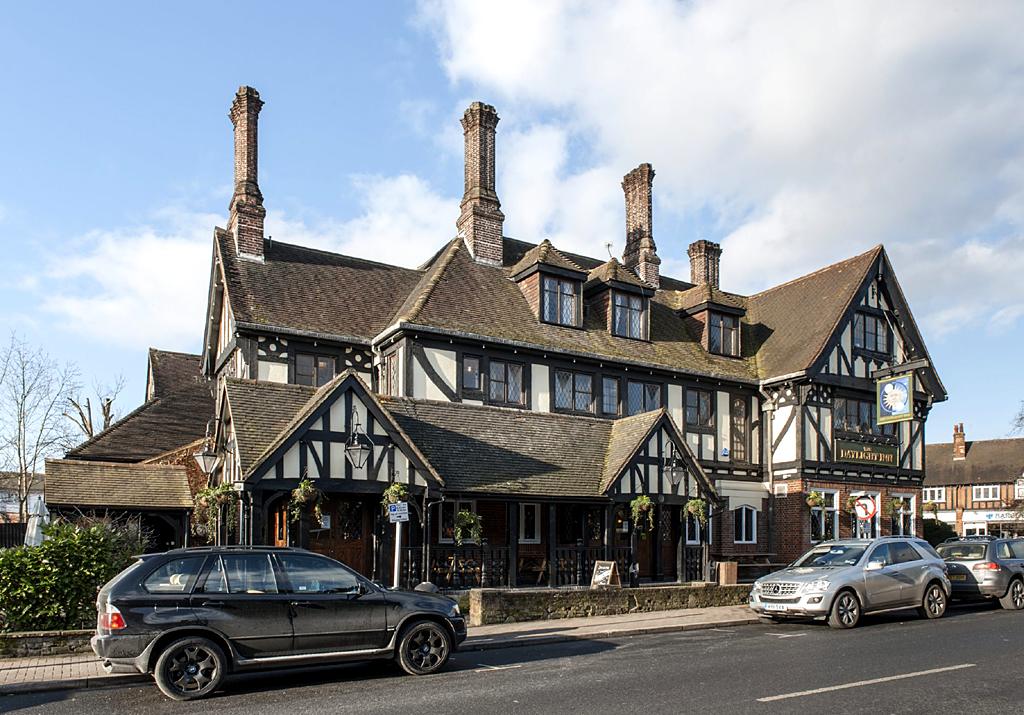
Built in 1935, The Daylight Inn at Petts Wood in south-east London was named after a local resident - William Willett - who campaigned for daylight saving.
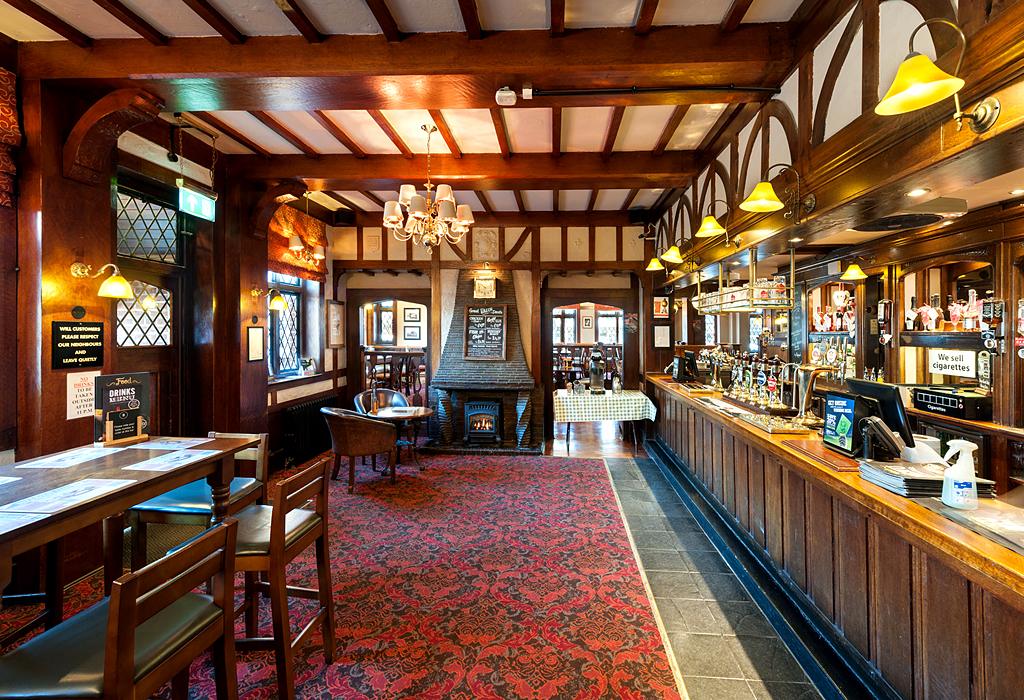
The mock Tudor look was very popular at the time - adorning the exteriors of three-bed bay-windowed semis and parades of shops.
When this next photograph was taken The Daylight Inn was only a few years old.

At least 5,000 pubs were built in England during the inter-war years.
This is the lounge bar at The Berkeley Hotel, Scunthorpe.
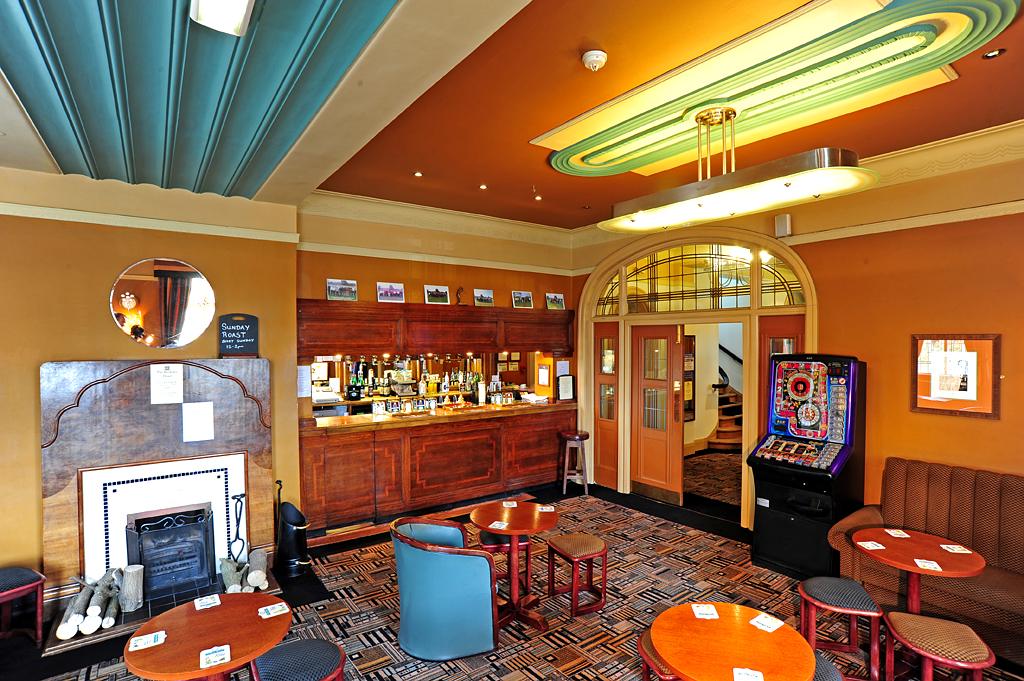
The pub actually opened just after the start of World War Two, in 1940.
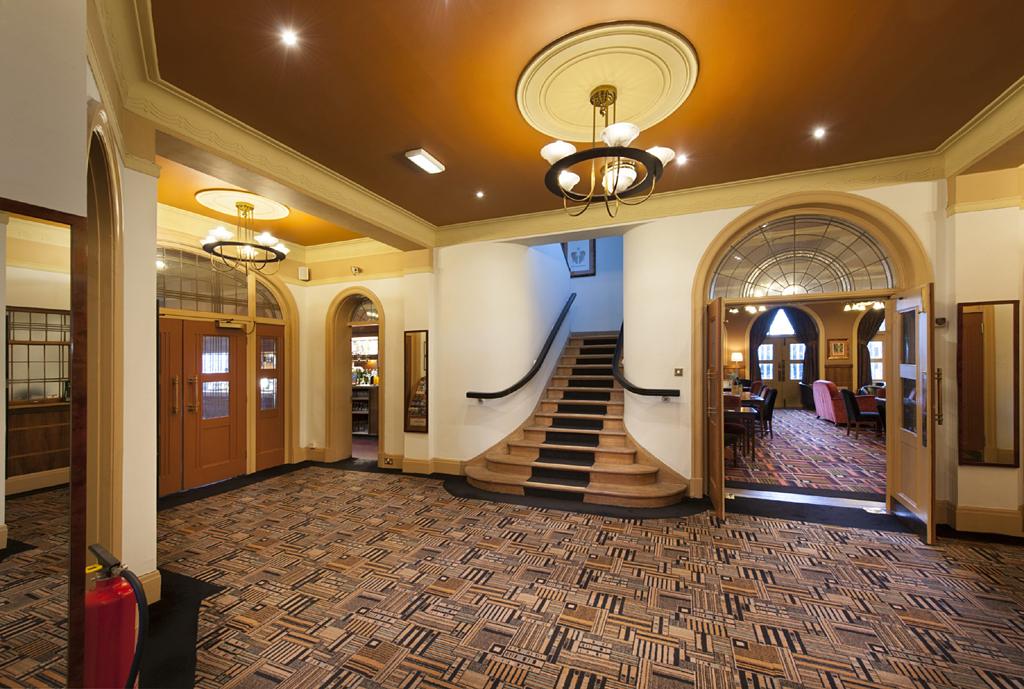
Historic England, which recommended that the government list these pubs, describes The Berkeley as a fine example of a "roadhouse" inn - with a large car park to attract passing customers.
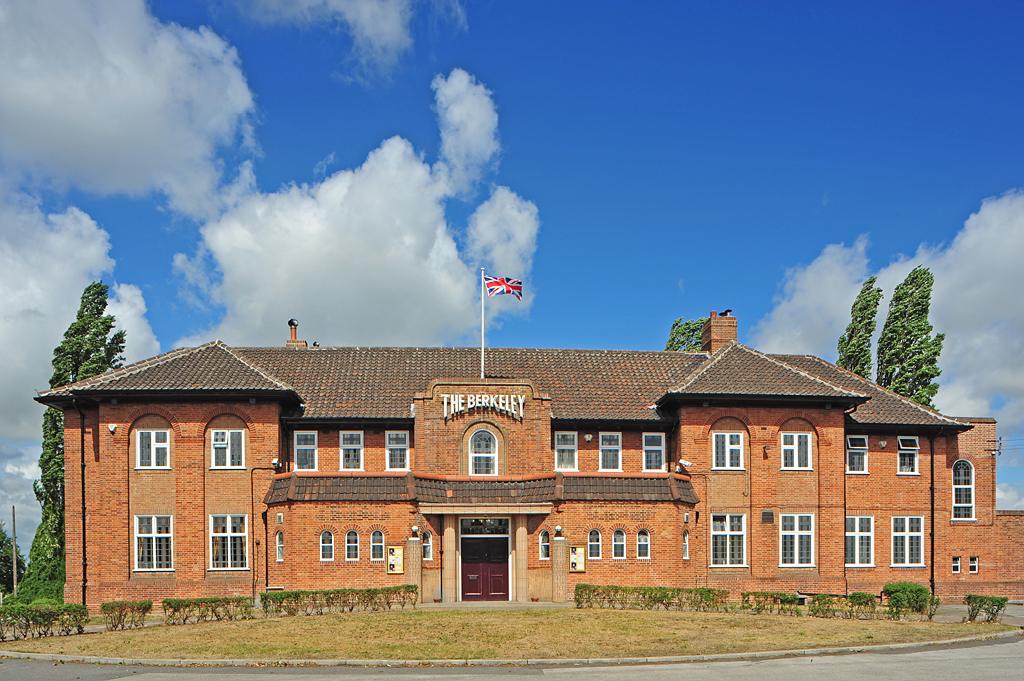
The 1920s and 30s saw the growth of the "improved" pub movement.
Breweries were eager to widen their customer bases, and cut the perceived links that many establishments had with drunkenness and debauchery - a hangover from the Victorian era.
When it was rebuilt in 1929 - in addition to the curved wooden bar pictured below - the Duke William in Stoke-on-Trent featured ladies' toilets for the first time.
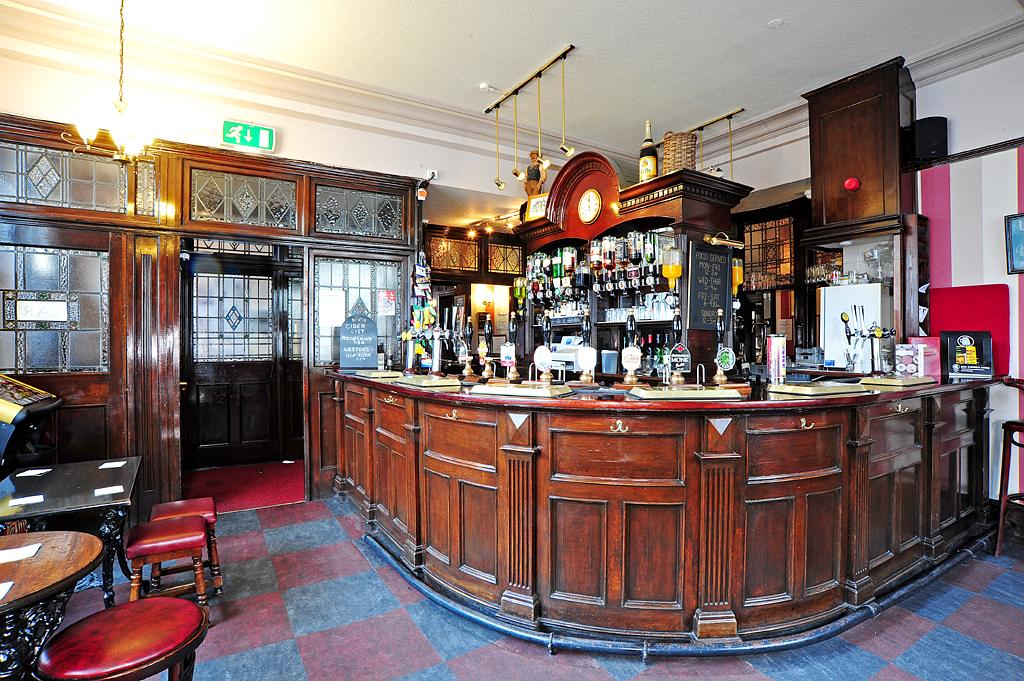
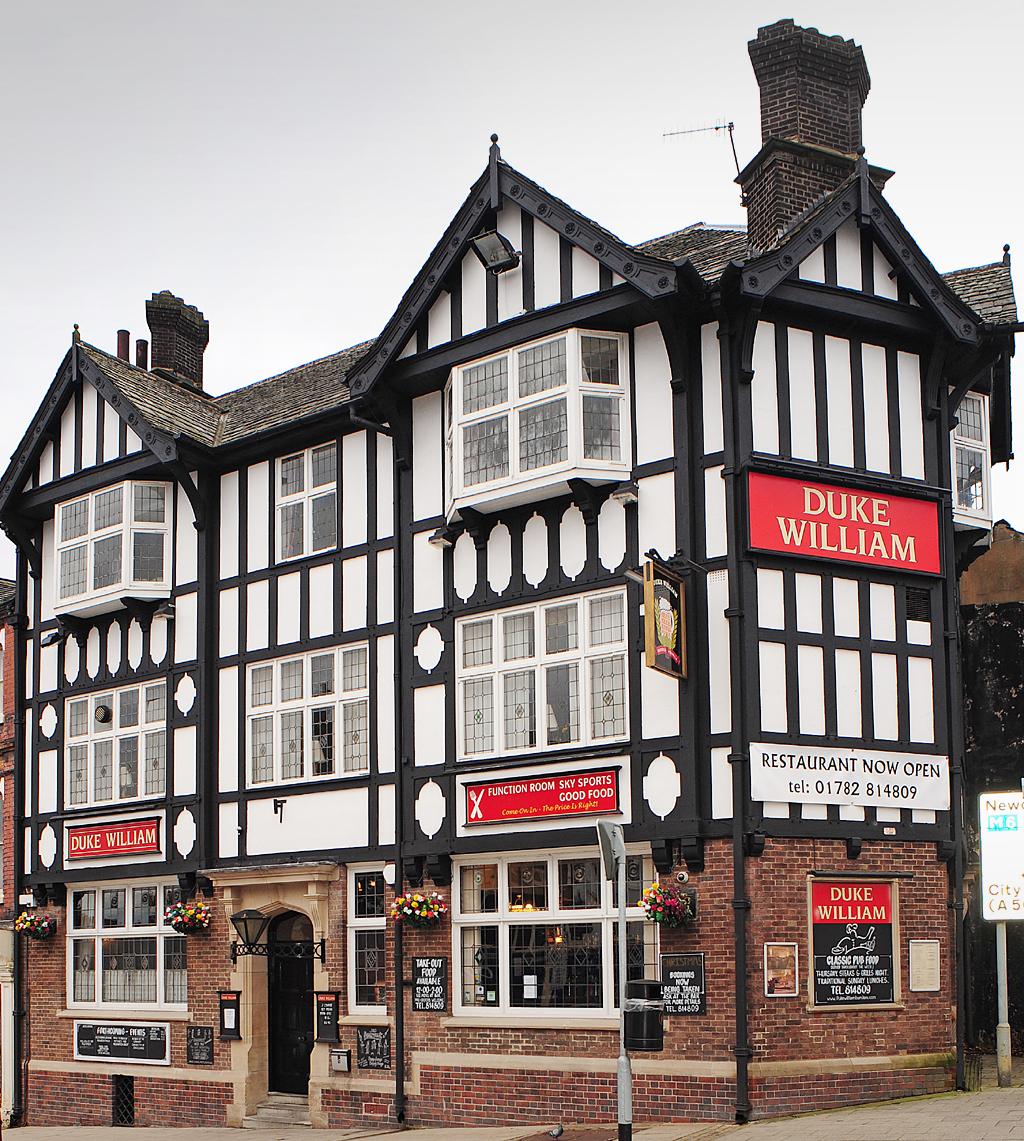
Improved pubs were generally built on a bigger scale - and often tried to offer activities beyond drinking.
At Alum Rock in Birmingham, the Brookhill Tavern had a large garden to try to attract families.
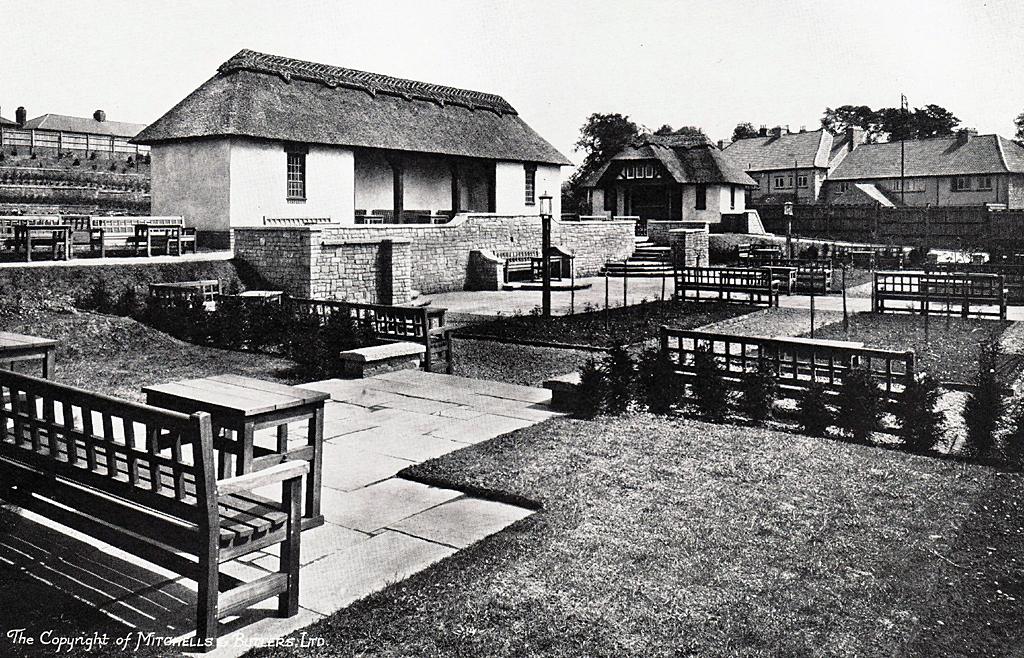
The Mitchells and Butlers Brewery - which was built in 1927 - was at the forefront of the improved pub movement in the Midlands.
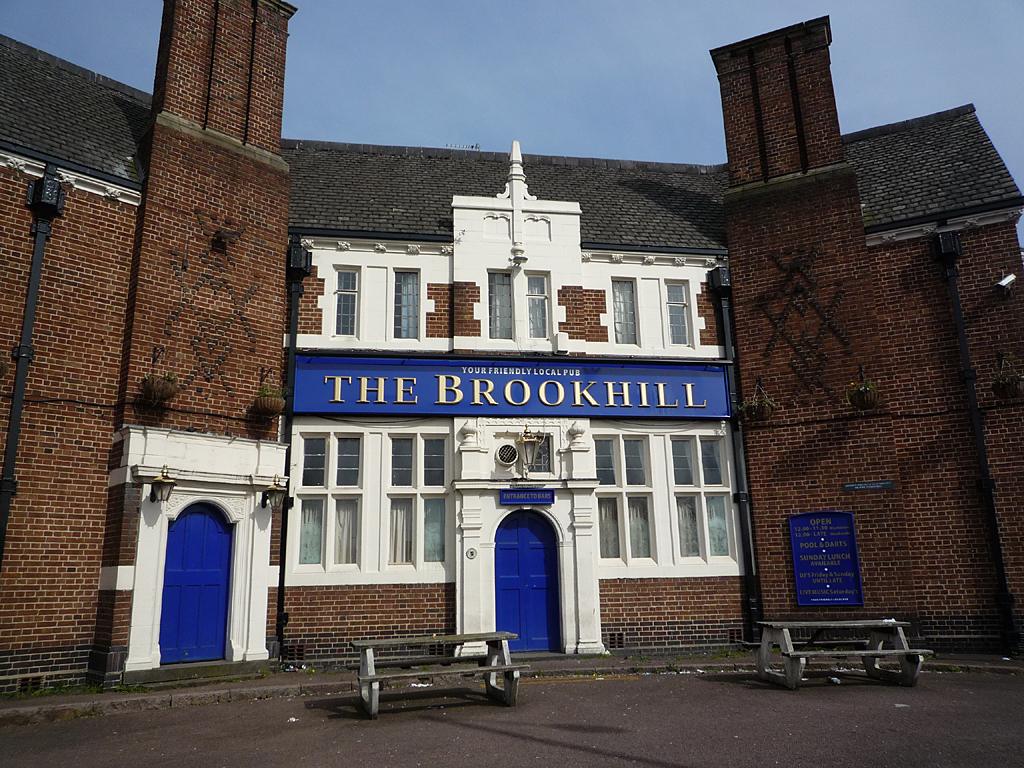
Staying in Birmingham, and with mock Tudor in spades, the Black Horse was built in 1929 by Davenports Brewery.
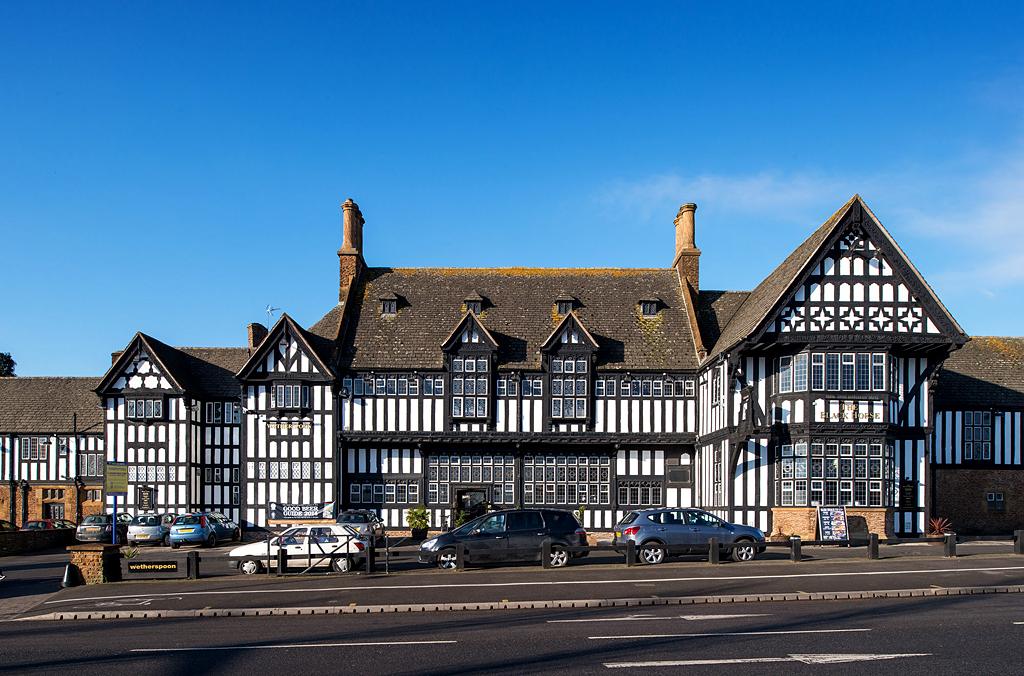
Situated on the busy A38 south of the city centre, it has a grand black-and-white frontage.
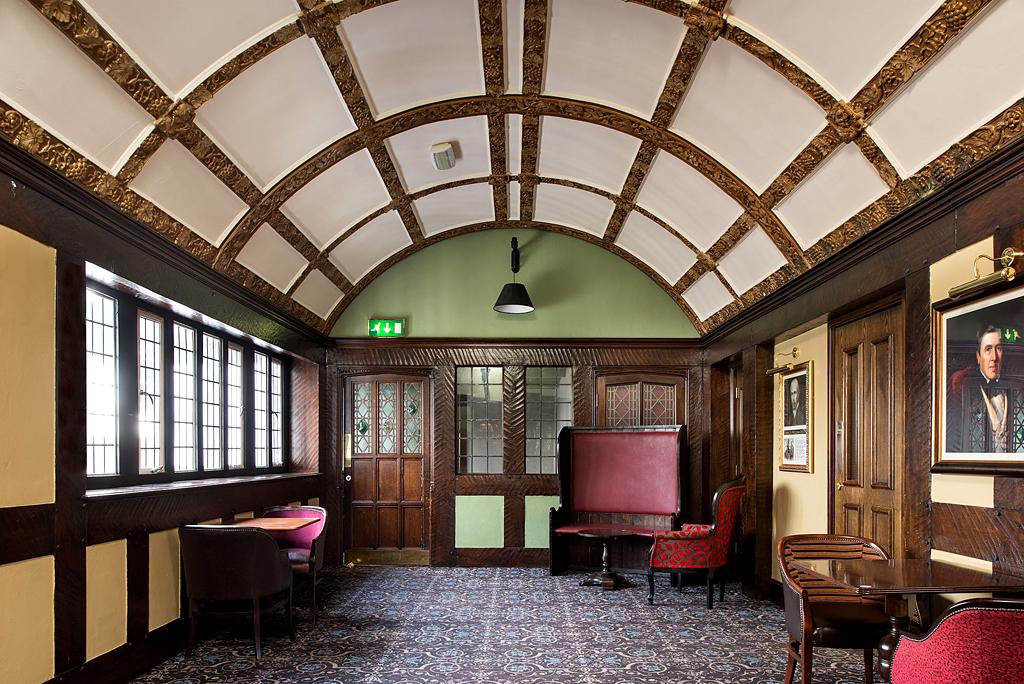
Davenports tried to offer customers a real sense of occasion and escapism.
It was already listed, but has now been upgraded from Grade II to Grade II*.
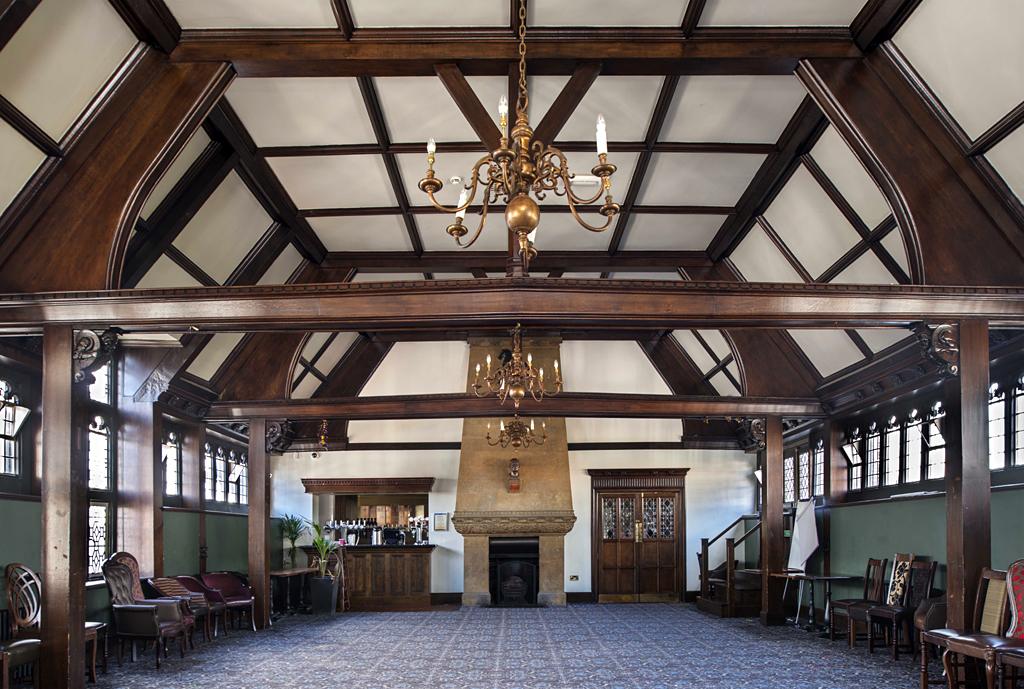
The White Hart at Grays in Essex was built in 1938 by Charringtons Brewery - one of the most prolific improved pub builders of the time.
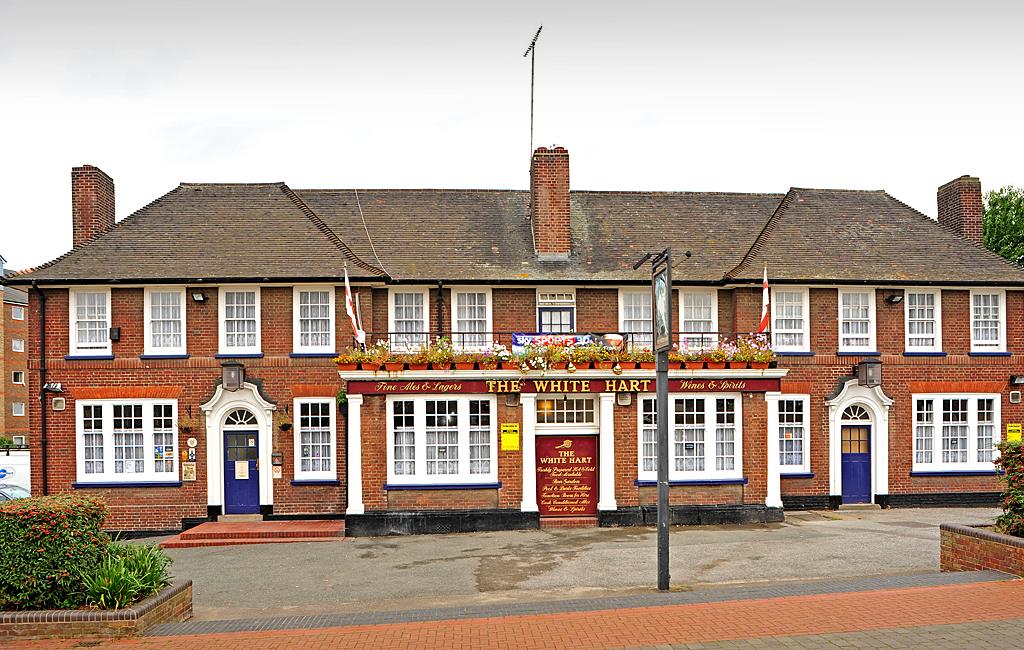
Inside the White Hart there is an impressive oak bar that stretches through five rooms.
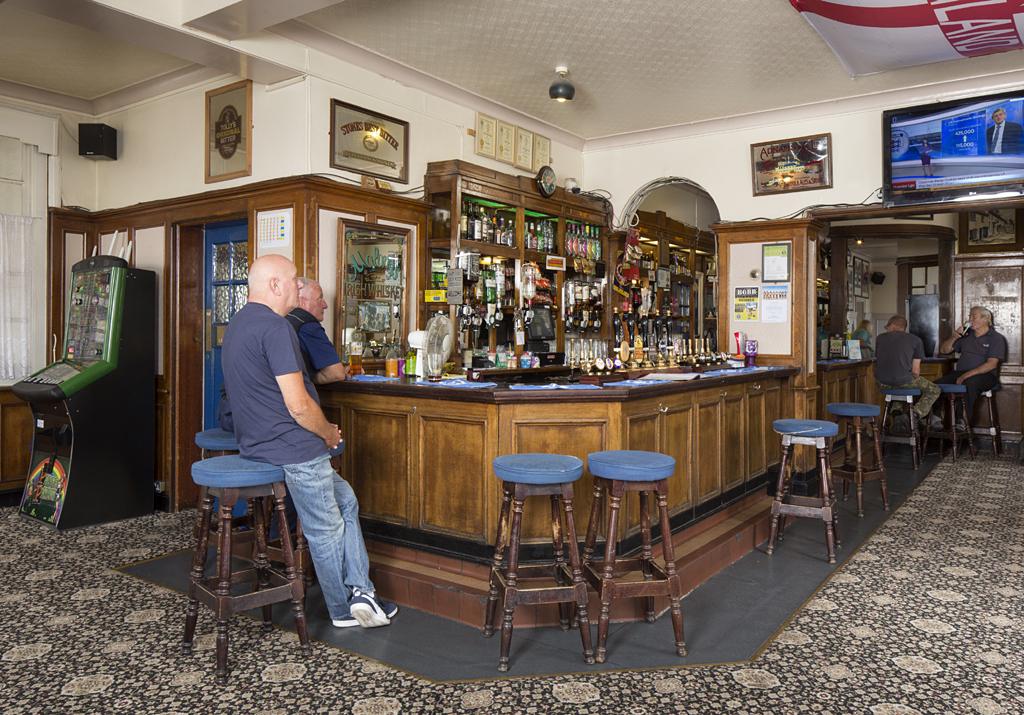
The image below shows The Wheatsheaf, at Sutton Leach near St Helens on Merseyside.
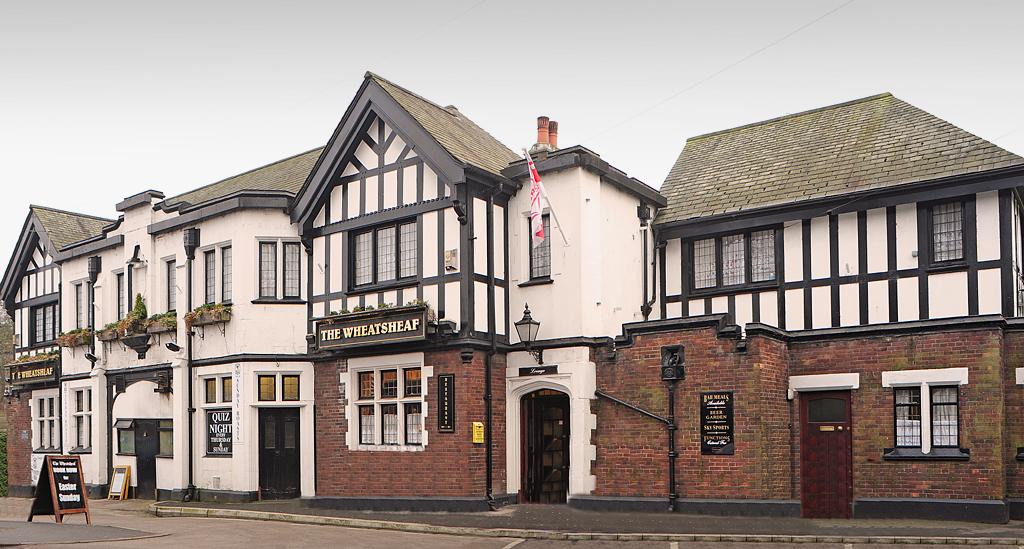
On day the pub opened in 1938 - according to local Frank Baumber - a big crowd of people had gathered to collect a promised pint of free beer.
But they were met by campaigners warning them against entering the "house of the devil".
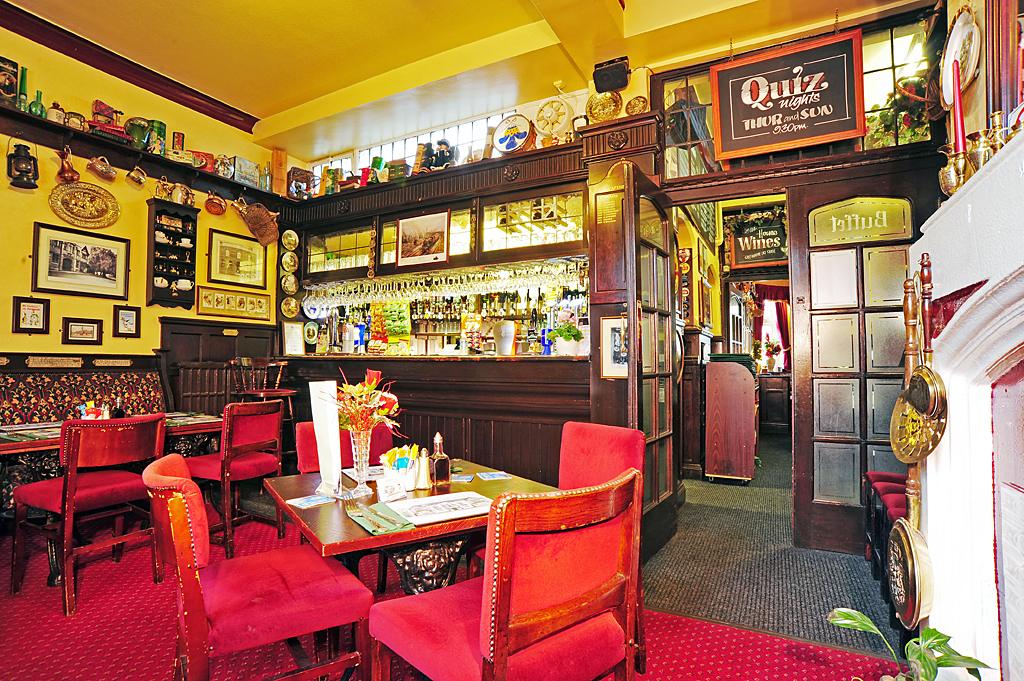
In Norwich, the Gatehouse - pictured below - was built in 1934 in the Arts and Crafts style.
There is a chequered pattern on its curved wall - made of flints alternating with pressed concrete blocks.

The building has changed little over the years - the chequered pattern is still there today.
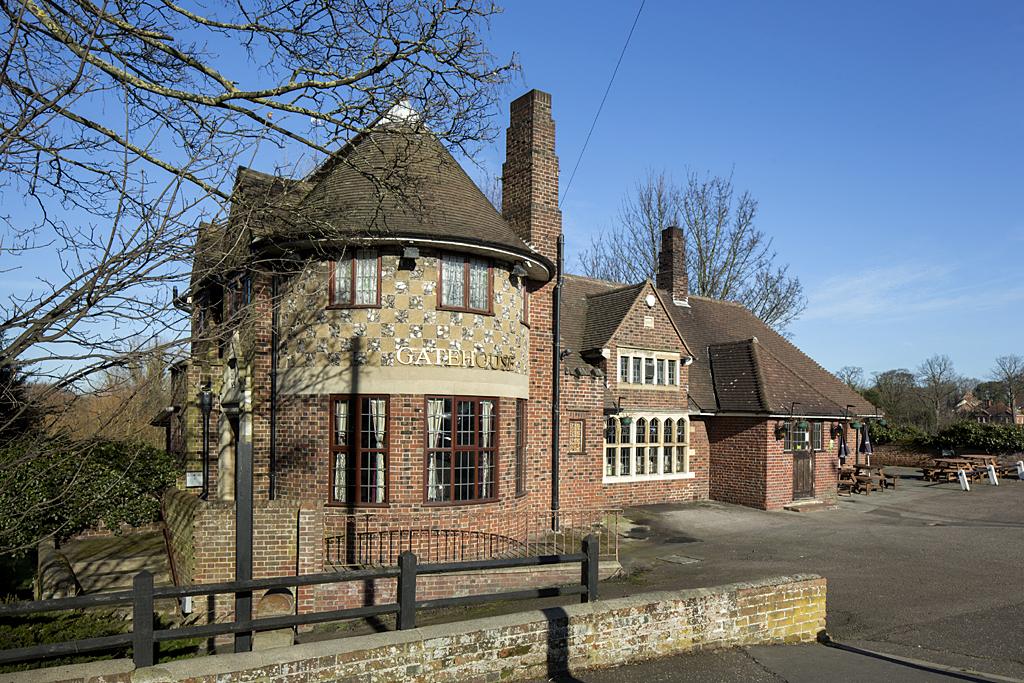
Inside the Gatehouse, the bar has the feeling of a small-scale baronial hall.
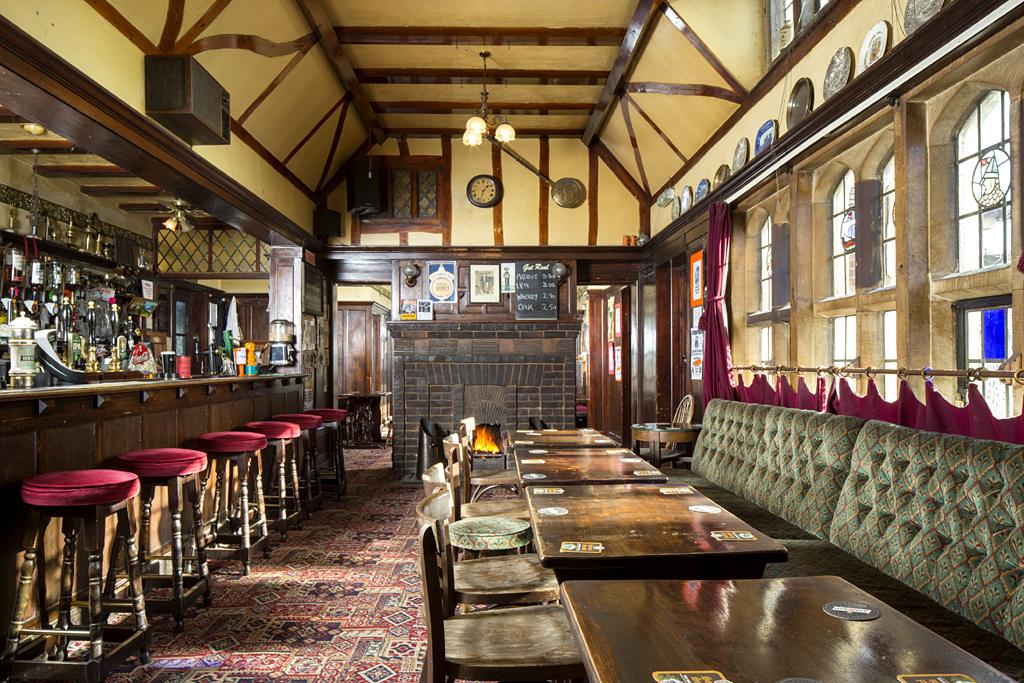
Many pubs in the inter-war years were designed in what became known as Brewer's Tudor-style - intended to evoke romantic notions of "merrie England".
This wood-panelled inglenook fireplace is in the bar of the Biggin Hall Hotel in Coventry.
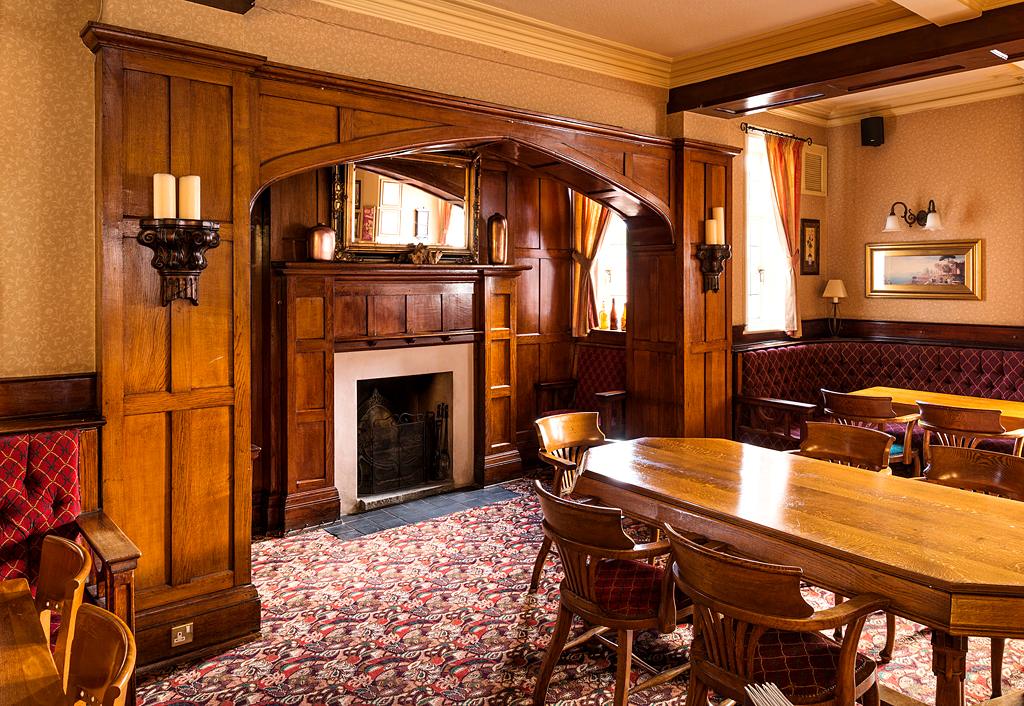
At Brixton in south London, The Duke of Edinburgh was built in 1936 by the Truman Brewery.
Compared with the mock Tudor style, it has a relatively plain, red-brick facade.

North of the Thames in Hoxton, the fairly plain 1935 exterior of The Stag's Head belies the beautiful surviving features inside.


With its curving roof, The Rose and Crown at Stoke Newington in London was built in 1930.
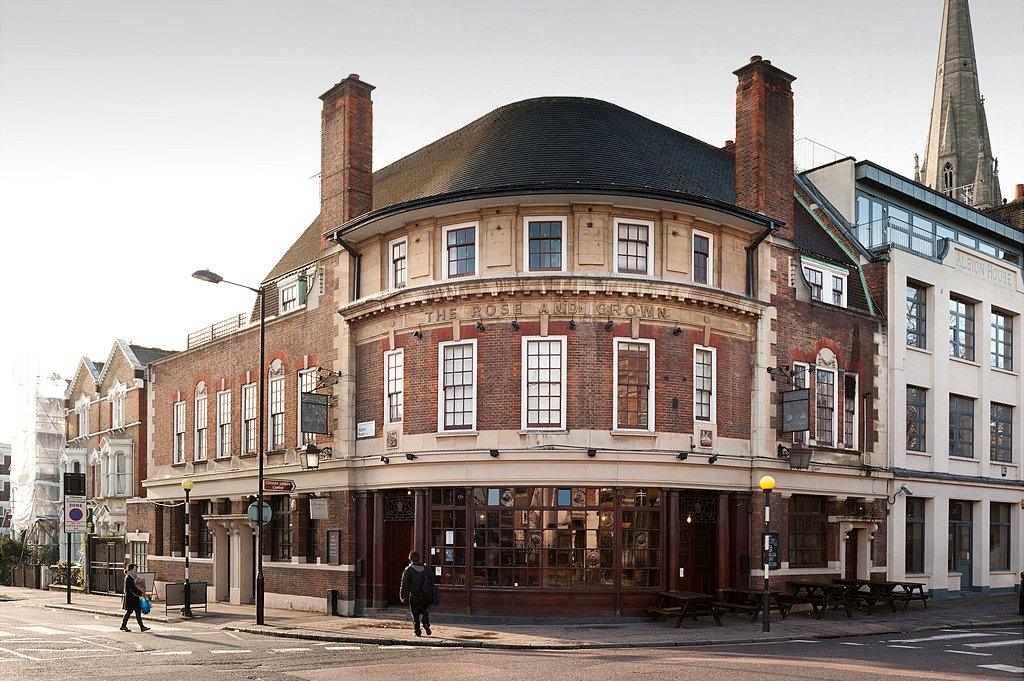
It is one of only a few pubs to still have a special ceiling made of Vitrolite - an opaque pigmented glass used to try to defy the notion that pubs were dingy.
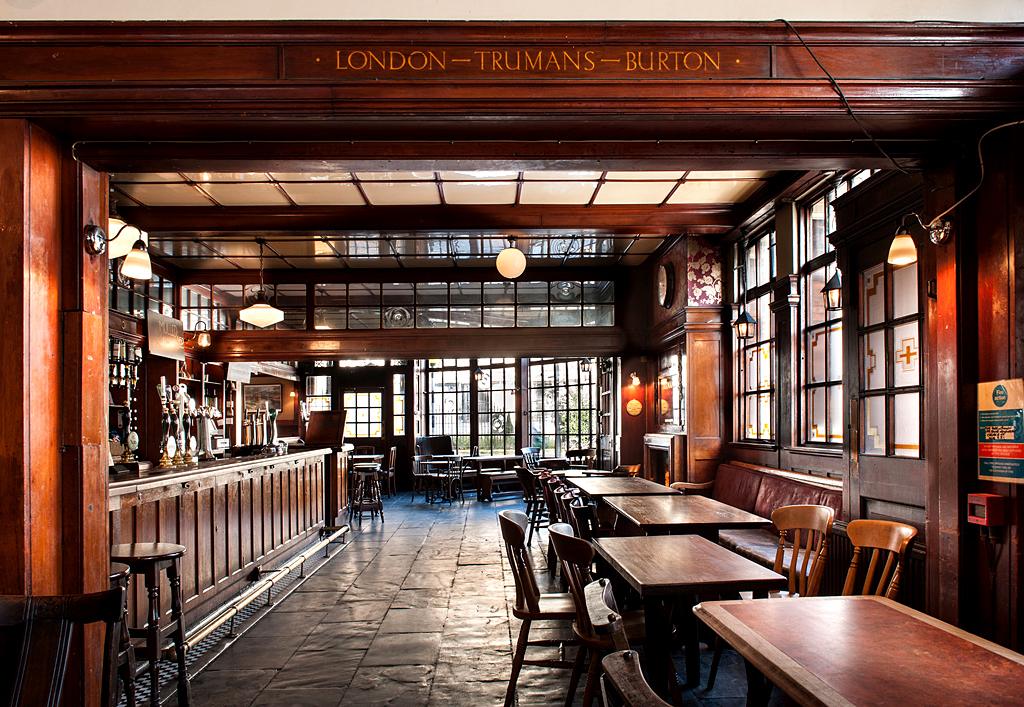
Just a mile or so away, The Royal Oak has the famous Columbia Road Flower Market on its doorstep - and it too has a Vitrolite ceiling.
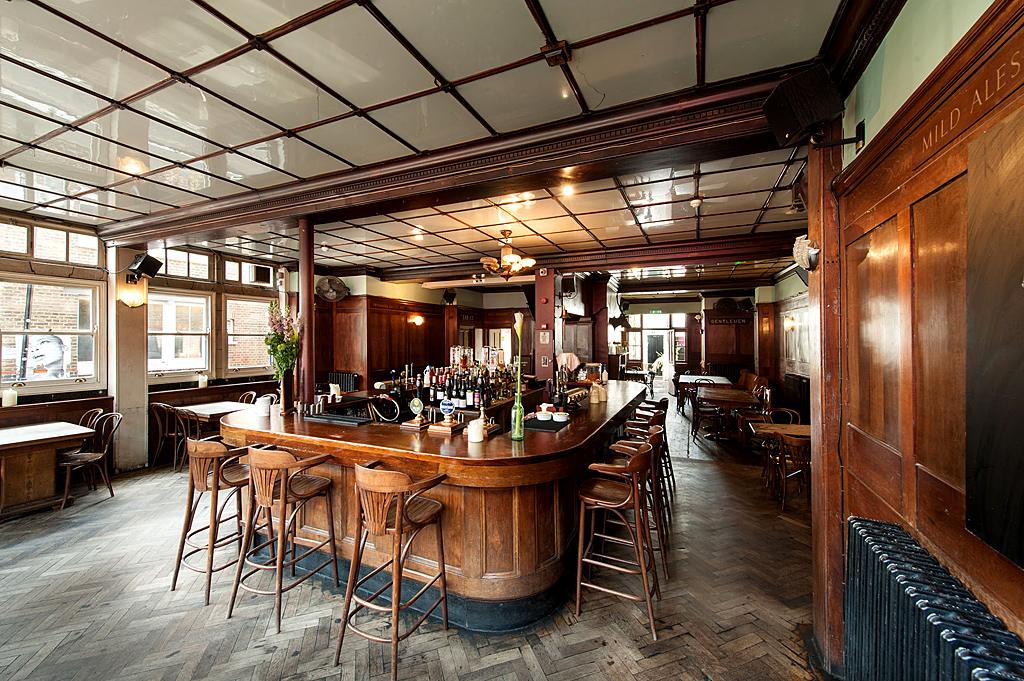
Built in 1923, it was used as a backdrop in BBC TV comedy series Goodnight Sweetheart - and played a starring role in the British gangster film Lock, Stock and Two Smoking Barrels.
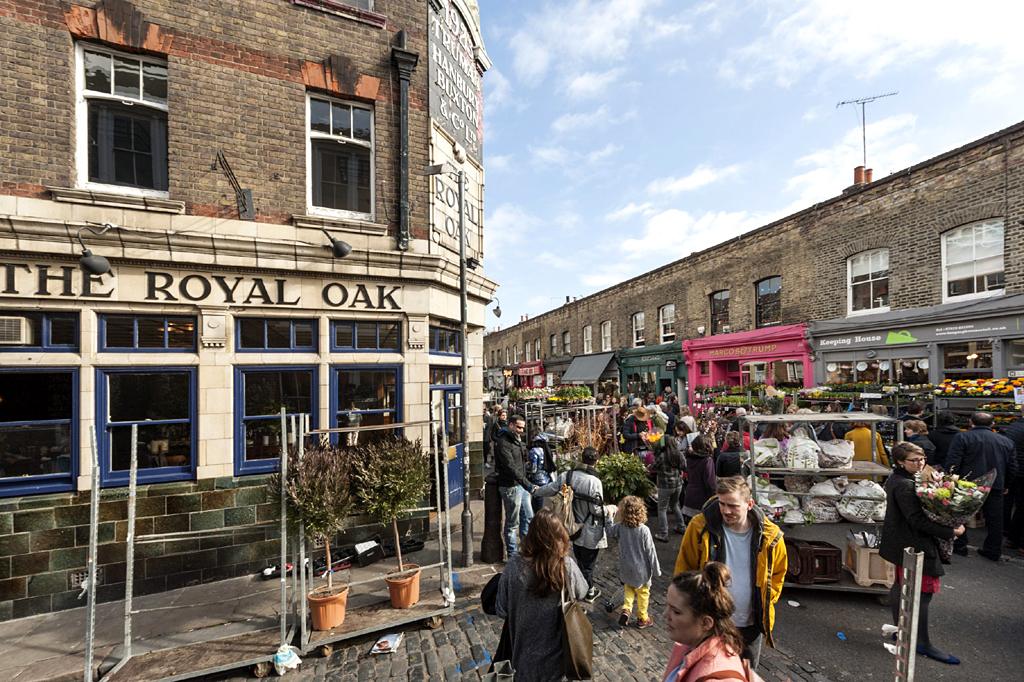
The Golden Heart at Spitalfields in east London was built in 1936 - just down the road from Truman's Black Eagle Brewery on Brick Lane.
Emblazoned with a rare Truman's neon-lit sign, the pub became associated with the artistic vibrancy of the area in the 1980s and 90s.
It was the chosen local of artists such as Tracey Emin and Sarah Lucas.

All the pubs featured have been listed at Grade II - except the Black Horse, Birmingham, which has been upgraded from Grade II to Grade II*.
There are now 93 listed pubs in England built during the inter-war years. All images copyright Historic England.
Subscribe to the BBC News Magazine's email newsletter to get articles sent to your inbox.